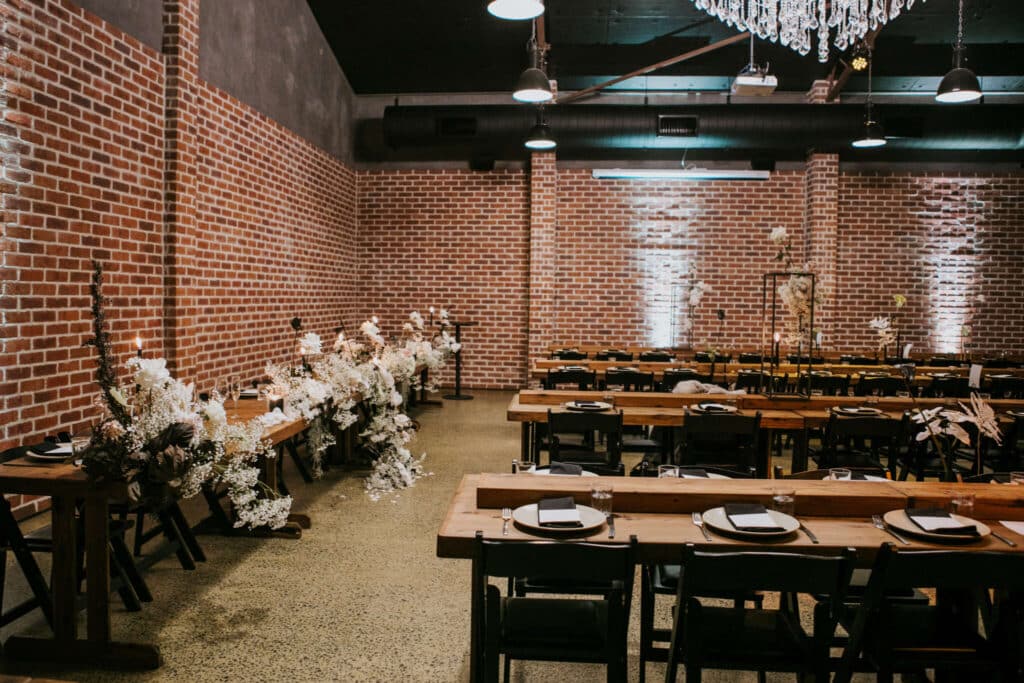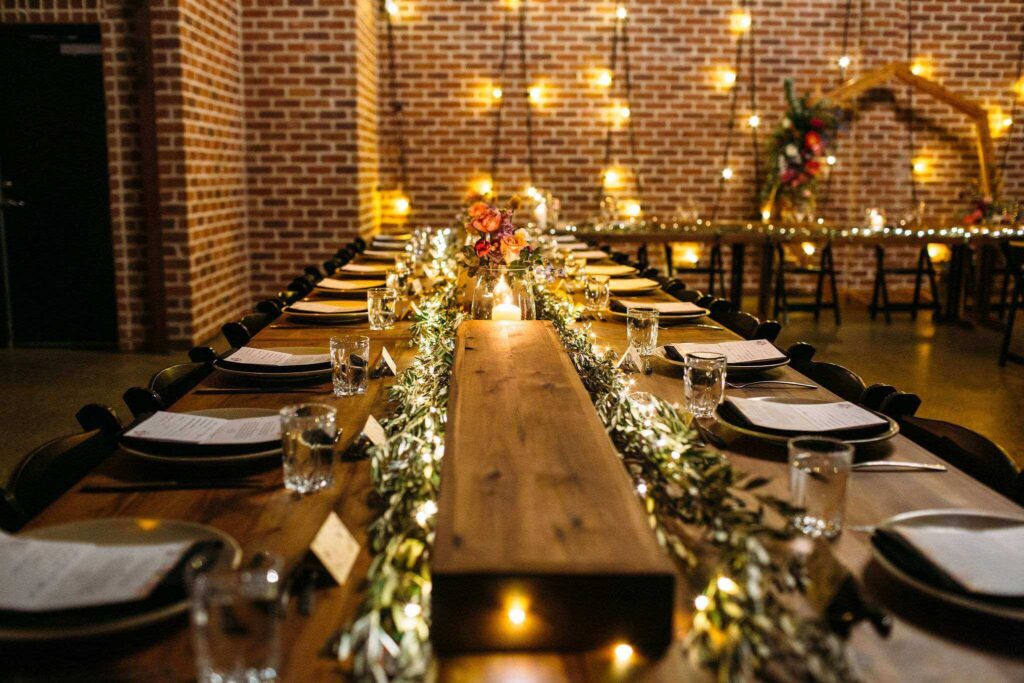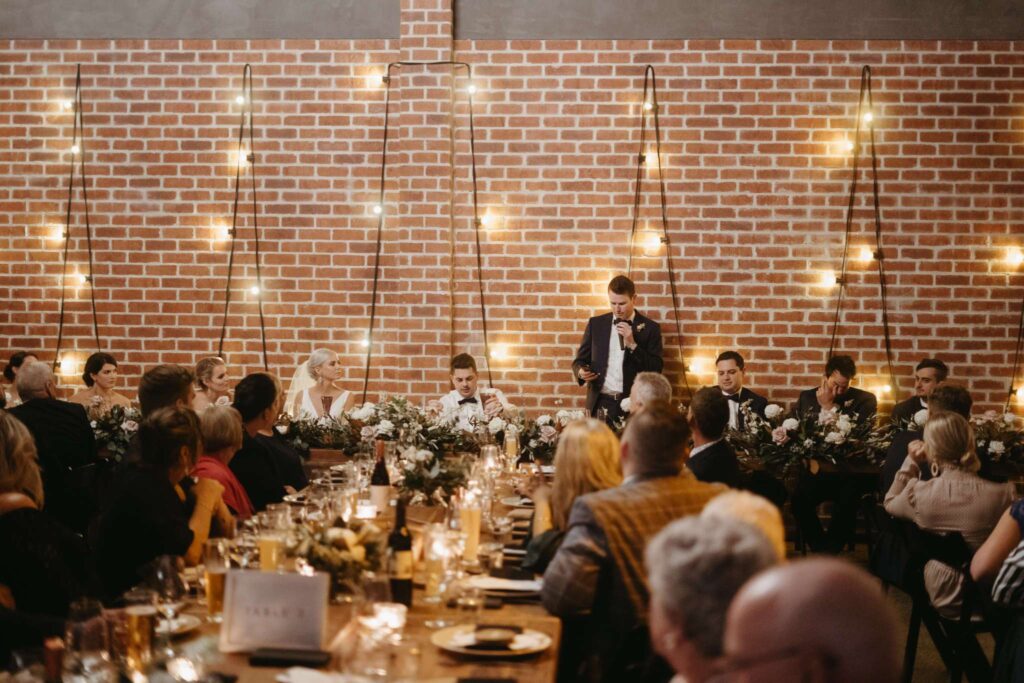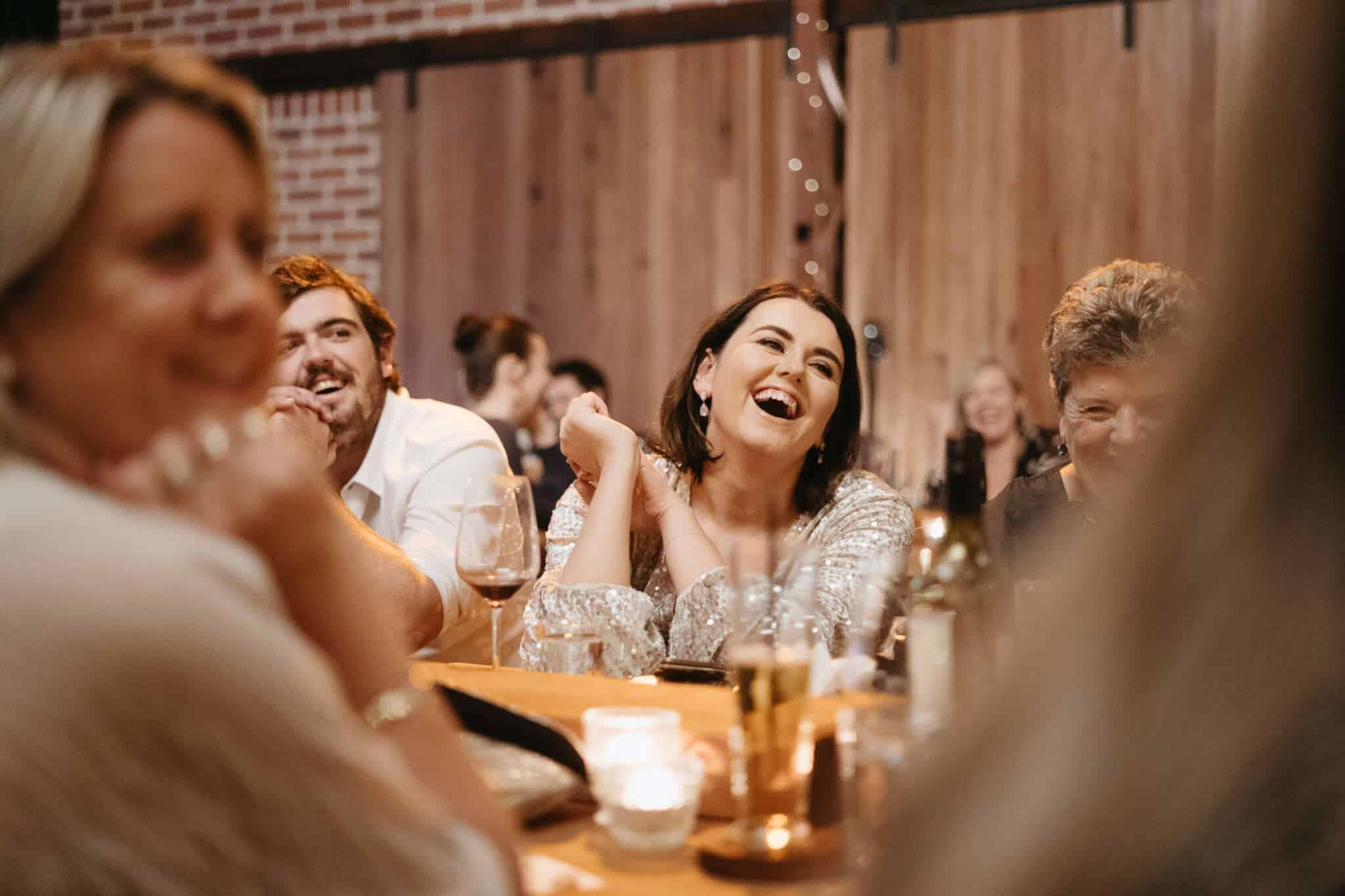DRAFTING THE GUEST LIST AND SEATING PLAN
Guest List
For some couples, drafting the guest list can be one of the most daunting tasks in the wedding planning process. Isn’t it straightforward who you want to invite to your wedding, you ask? For many, the capacity of the venue, the kind of wedding you have envisaged, and your associated budget may influence your guest list… not to mention the potential input from well-meaning family as to who “must” be invited. Whilst there’s no one-size-fits-all approach, we do have some suggestions that will help you begin drafting your guest list:
Method 1 – Individual Lists
A great method is for each of you to separately write your own guest list. Then, compare the lists to see where there is overlap and common ground. The people that you have both listed could be classed as ‘definites’. The remaining potential guests can be discussed and decided on from there. To assist this method, first ensure you’re on the same page about the approximate total number of guests (e.g., if he’s aiming for a large celebration and she wants an intimate gathering, then there’s going to be a disconnect).
Method 2 – Definitely, Maybe
Alternatively, you can draft a list together dividing guests into three columns – ‘definites’, ‘likely’, and ‘maybes’. Anyone that you are both certain of, you can pop in the ‘definite’ column. Those that you think could be a probablility, place in the ‘likely’ column. Anyone that you are unsure of, or disagree on, put in the ‘maybe’ column. You can then discuss the guests in the latter two columns and move as you see fit (remembering to consider your venue capacity, wedding vision, and budget).

Image: Amy Higg Photography
Method 3 – Visual Planning
The third option is to draft guests alongside your seating plan. This is only really effective if you are constrained by a venue’s capacity and want to visually map out where everyone would sit. Grouping people together by category can be a start: think immediate family, work colleagues, school/university mates, children, the groom’s mother’s side of the family… you get the point!
Family Input
Depending on your relationship with your parents, or if they are financially contributing, they may wish to have some input into the guest list. You could ask them to give you a list of names to be considered in conjunction with your list, or you could allocate a specific number of guests for them to invite.
For those with longer engagements, it’s best to keep the guest list confidential until closer to the date. Things may change over time. Promising invitations to your current supervisor or your sister’s latest boyfriend, may lead to awkwardness down the track if those relationships change.

Long timber tables perfect for share feasting
Seating Plan
Once you have mastered the art of drafting the guest list, you have the fun task of planning where your guests will be seated. This is usually a fluid plan that is subject to change as the RSVPs start rolling in. Some couples may prefer to wait until they’ve received all RSVPs, before tackling this task.
There are two main seating options for a sit-down reception: assigned table with assigned seats; or assigned table with open seats.
Assigned Table & Assigned Seats
Our recommended option is to assign guests to a particular table and a particular seat. This can be helpful for a number of reasons:
- Assist staff in serving meals to the right people (e.g., dietary requirements)
- Seat people with others they know (especially if some guests only know a couple of others)
- Carefully position any guests involved in family politics or conflicts between friends
- Avoid playing musical chairs as everyone shuffles into place.
Assigned Table & Open Seats
This option allows guests the freedom to sit next to who they want on a particular table. It can work if a majority of the guests get along well and are a relatively laid-back crowd of people. However, for the above-mentioned reasons, it’s not the standard seating option.
It would be wise to reserve seats for special people (e.g., immediate family) so they don’t end up seated furthest away.

Factory51’s stunning function space: The Workshop
Bridal Party Seating
A tradition that is still practiced today, is that of the bridal table. Typically, the couple are seated on a long table running perpendicular to the guest tables. The bridal party usually accompany them, sometimes with variations of partners or the couple’s parents. Alternatively, some couples enjoy to be seated amongst their guests on Factory51’s long feast-style timber tables. This places them in the centre of the action, with a more relaxed feel (as opposed to being ‘on display’). Wherever you choose to sit, make this decision before trying to plan the guest seating.
A Note on Proximity
Traditionally-speaking, guests that are seated closest to the bridal table (or wherever the newlyweds are seated) are considered to be the most important to the couple. This flows outwards to the guests seated furthest away. As much as you may like to treat everyone with equal importance, there is a level of realism in this seating tradition. Most guests would expect immediate family to take prime position – again, this is dependent on your individual familial situation. However, there is a way to help appease Aunt Marge or Barry from accounting – simply point out the benefits to their seat! Maybe they’re positioned closest to the bar, with easy access to the dance floor, or in a quieter place in the room.
It pays to think through ease of access for disabled guests and those with children/babies in attendance. Allowing space for walkers and prams, or an easy route for a quick escape if a little one becomes unsettled is helpful to those guests and to the running of the night.
Ultimately, the comfort of your guests contributes to their enjoyment of your day. Considering interactions, proximity, and accessibility for guests may not be acknowledged firsthand, but does play a meaningful role. Our team at Factory51 have a wealth of knowledge and experience in seating plans, so feel free to contact us if you need any assistance.

